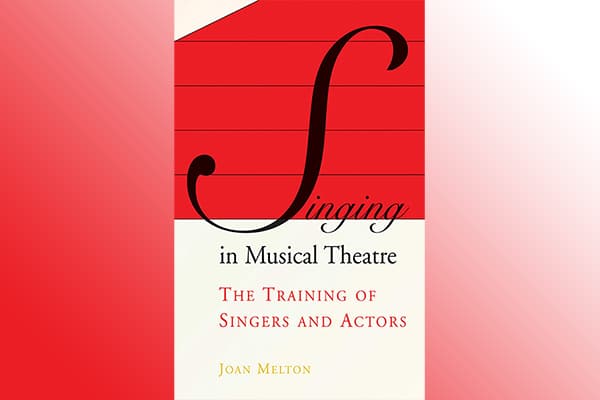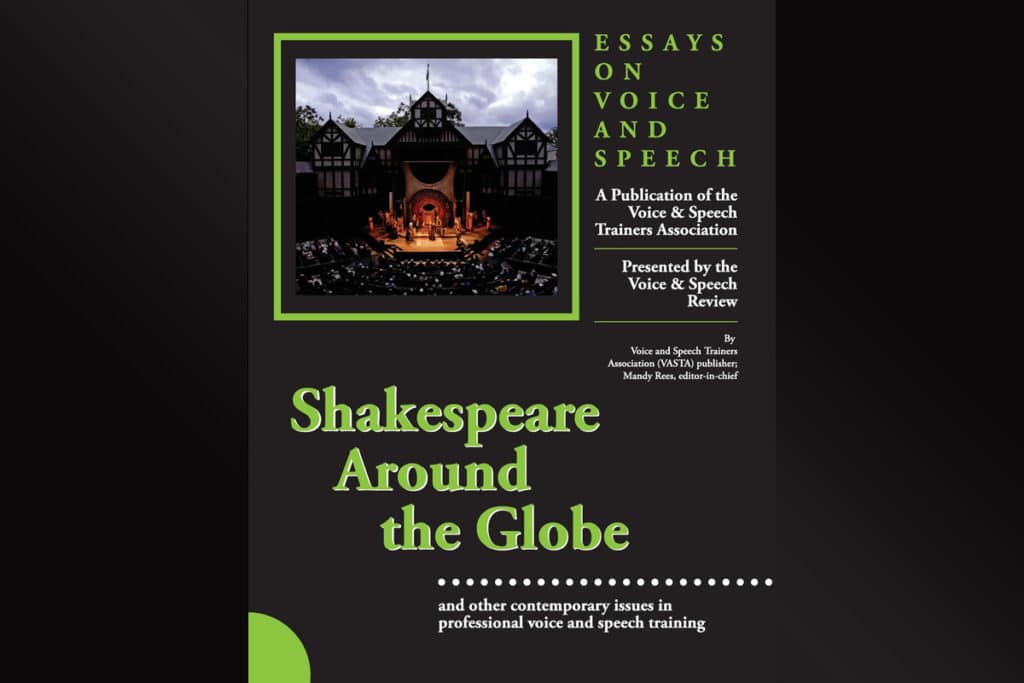As a musical theatre voice teacher and performer, I am committed to developing a shared methodology with my colleagues in voice and speech. Musical theatre training in the universities has been fragmented, with students trekking from department to department to study singing, acting, speech and dance. The recent proliferation of BFA programs in musical theatre will produce an impetus toward integration within those programs of all aspects of training. And the differences between speech-oriented singing techniques for musical theatre vs classic bel canto techniques will be increasingly apparent.
When Richard Rodgers, Oscar Hammerstein II, and Agnes DeMille produced “Oklahoma!” and “Carousel” in the 1940’s, creating what they called the “musical play”, musical theatre departed on its own path. The musical play, which we now call simply “the musical”, is a new art form and, unlike opera, its first allegiance is not to music but to drama. Singing styles did not immediately change in response to that difference. At first, musical theatre composers created scores and roles to accommodate the more “classical” voice type. Casting announcements in New York trade papers through the 1960’s called for sopranos to sing the ingénue and leading lady roles, while “altos who belt” were summoned for the character and/or soubrette roles. These casting call requests presupposed a traditional classical break in the female voice around F/G above middle C. A less distinct but similar classical model was applied to male performers who typically trained above or below the passaggio at F4.
Musical theatre composers have long since abandoned this classical voice model and today’s casting calls are for singers who command a fully integrated mixed voice. The musical theatre performer must now step effortlessly with no discernible transition from speaking to singing and from singing to speaking, combining a full vocal range that doesn’t unexpectedly break, shift or flip, but is available in a seamless continuum from the lowest to the highest note. Therefore, registration balance becomes the biggest challenge facing today’s musical theatre actor and the teachers who train them. If, as often happens, a female student comes to me speaking in a modal or chest quality between middle C and the F above it, how can I engage her to extend her speaking voice comfortably, naturally into the octave above that where her music is written and where she will be required to belt? Where will she put those squeals, shrieks, growls and whines that are now part of the expressive palette of a musical theatre singer? The emotionally authentic sounds women make in moments of great excitement, passion or stress. How do I train the young lyric baritone who is now required to sustain a speech quality in a song taking him to a high A-flat although he has rarely spoken above an F? The shared pedagogy I foresee will include the development of a refined muscular co-ordination of the bass (thyroaretynoid ) and the treble (cricothyroid) components present in the voice at any given moment, palatal awareness and control, and a high degree of flexibility in laryngeal position. The result will be a greatly expanded ability to put the voice, speaking or singing, fully at the service of the character’s emotional need for expression.
Teachers of singing and speaking have been reluctant, out of concern for possible harm or because of aesthetic considerations, to abandon methodology proven across centuries. The concern for harm was real as long as musical theatre belting was conceived to be the dangerous extension of the chest voice into the upper register. From a voice trainer’s point of view, the secret ingredient is the mixed and extended middle voice, tracking the singing and speaking arc as one. The aesthetic concern must be re-understood against the changed paradigm of a new art form anchored not in music but in drama. If we as theatre trainers, take as our premise the notion that dramatic intention is the governing force in all that is said or sung on stage, the demand on the actor’s voice is no longer bound by any pre- designated aesthetic concept or sound idea. Joan Melton says, in the introduction to her book, (Heinemann, 2003) “One Voice: Integrating Singing Technique and Theatre Voice Training,”
“I believe that most singers would benefit enormously…if singing were taught as one of several uses of the voice, along with speaking, laughing, crying and the variety of other vocal sounds essential to the actor’s work. Speaking and singing have common denominators and finding out what they are and making them our own requires research, study, and a genuine openness to rethinking what we know.”(p.xi)
I concur with Joan Melton’s suggestion that we must be open to rethinking what we know about voice training. There is a new ideal at work here as new musical scores are composed with new and surprising vocal challenges for the performer. It is important for classically trained teachers to view the incorporation of a “speaking quality” in the middle voice as an additional and critical technique performers must master in order to work professionally in musical theatre. The mixed voice is in no way a reduction or corruption of the bel canto traditions; musical theatre singing is a wide-spectrum style, where classical concepts like “fach” no longer apply.
Over the years since Carousel and Oklahoma! hit Broadway, Golden Age revivals have provided work for classically oriented singers. But even these expectations have changed. It is enlightening to listen to several recordings of Oklahoma! (often cited as the first “modern” musical). Hearing Alfred Drake, who originated the role of Curly in 1943, Lawrence Guittard in the 1981, and Hugh Jackman in the 1998 revivals, singing Oh,What a Beautiful Mornin’ vividly illustrates the progression away from bel canto style toward the more speech-like vernacular quality this article addresses. The newer shows on Broadway are sometimes almost shocking in their vocal demands as performers are being asked to defy seeming physiological limits. We recently took our Penn State BFA students to a performance of Wicked on Broadway. The girl’s eyes all gleamed with tears of recognition and personal ambition as they watched Idina Menzel suspended mid-air, arms extended, red tongue flaring against her green witch-face singing “Defying Gravity” in a clarion belt that soared to a high F. Ms. Menzel’s Tony award winning performance again raises the bar for young musical theatre performers with her acting and singing prowess. Her good-witch counterpart, Kristin Chenoweth, is something of a poster child for the new musical theatre performer. Chenoweth also belts in Wicked, not so wickedly high as Menzel, but with clarity and power. She also sings in a beautiful, seamless soprano. She speaks and sings in a consistently narrow vestibule appropriate to humorous character roles. We love her in Munchkinland, but to be as successful as Hecate as she is as Glinda, would require her to deepen the chest resonance in her voice.
Chenowith and Menzel are exceptional indeed, but composers and directors are beginning to take the exceptional for granted. Twenty years ago such vocal gymnastics would have seemed almost freakish. Those of us committed to training actor/singers to respond to these new demands cannot assume that techniques applied in the first half of the 20th century will see us through the first half of the 21st.
– Mary Saunders-Barton with Robert Barton


